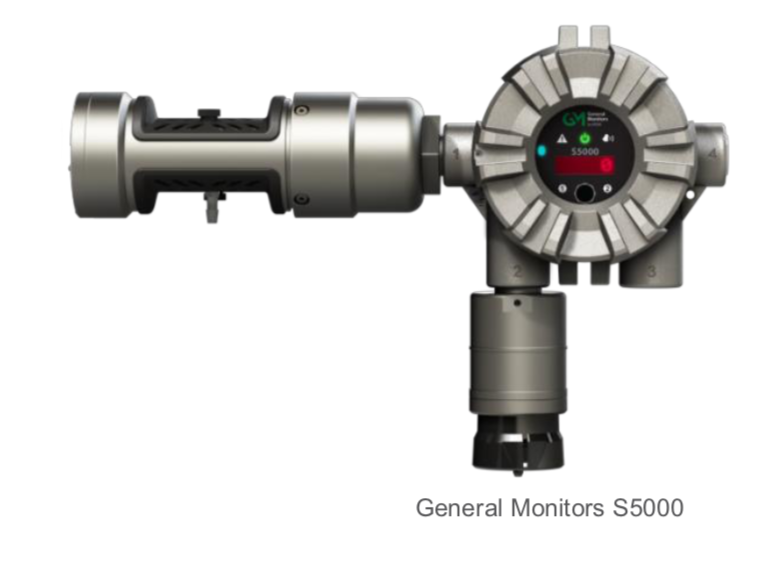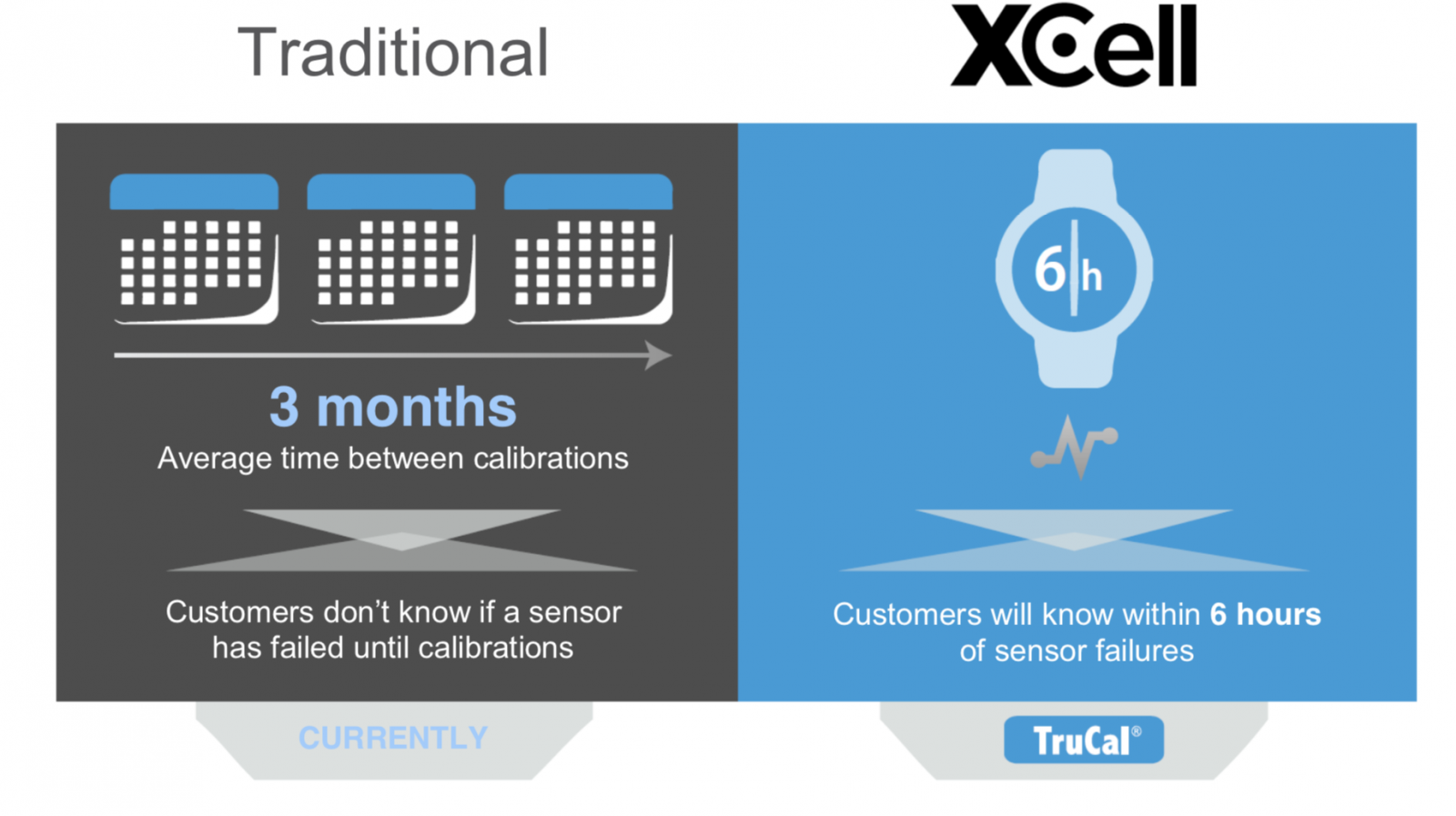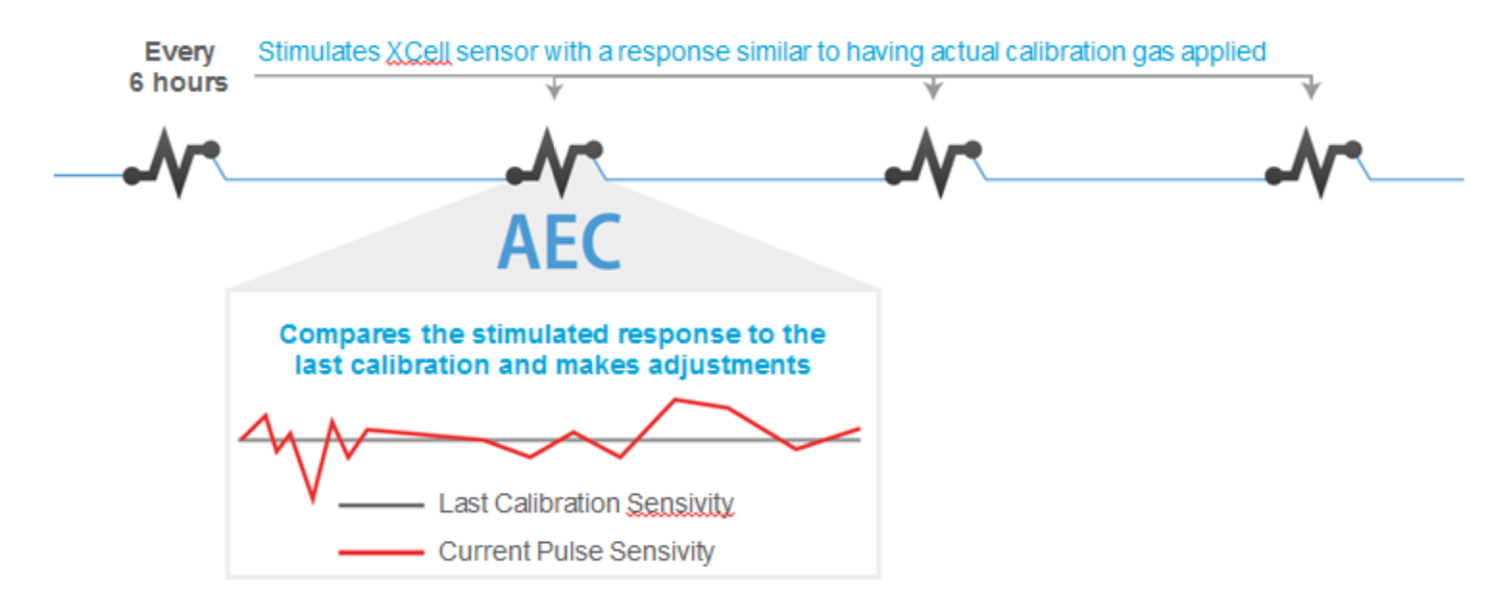The Future of Gas Detection
MSA TruCal® Technology
The future of gas detection is coming, with the introduction of the MSA ULTIMA® X5000 and General Monitors S5000 gas monitors. For over 40-years, MSA has been the global leader in Fixed Gas and Flame Detection. With the addition of General Monitors in 2010, and our commitment to quality, we have developed the most advanced technologies to provide complete solutions for your gas detection needs. This platform has integrated cutting-edge technology such as non-intrusive touchbutton operation, dual sensor capability, extended calibration cycles and Bluetooth® wireless communication offering benefits such as a low total cost of ownership and a completely new user experience making this platform years ahead of its time.
Design elements such as a touch interface, an industry first, as well as a bright OLED (Organic LED) display for an easy visual status indication ensures plant and worker safety. In addition to the enhanced interface, the ULTIMA X5000 offers extreme visibility with two side LED indicators for normal operation, fault and alarm indication. An easy retrofit of the detector is possible because it shares the exact mounting footprint.

Do more with less utilizing the dual sensor capability. The 5000 series dual sensing technology doubles the sensing power with half of the wiring or conduit of a single gas transmitter. Any sensor combination can be remotely mounted and mixed to suit your gas detection needs. Maximum remote mounting distances have increased as well, making the 5000 series the most flexible transmitters available.

Data on Demand
The 5000 series provides the data granularity that you need, where you need it. Optional Bluetooth wireless communication allows you to securely access detailed gas, sensor health, and fault information on your mobile device, while maintaining the simplicity of the analog signal for each sensor. Both HART and Modbus protocols come standard on the 5000 series, making it the most dynamic offering of communication protocols compared to any current industry transmitter. Check status and get alerts up to 23 m (75 feet) away, initiate calibration and view progress. Reduce setup time by at least 50%.
TruCal® Technology
Let us cut your maintenance cost and time in half with the ability to go up to 1.5 years between calibrations using our revolutionary TruCal® technology. The new advanced sensor platform will allow for longer sensor life, longer warranties, better stability, extended calibration cycles and multiple sensor status checks per day to ensure operation. Challenge your expectations with a three year sensor warranty and a five year expected life cycle on toxic and combustible digital sensors. Today, best practice for the Oil and Gas industry is to calibrate gas detection devices with electrochemical cells every 90 days. However, the devices currently on the market are only able to communicate a cell’s end of life during calibration. Therefore, the 89 days between calibrations represents an unknown for the end user as the cell could have failed at any time. TruCal technology reduces this unknown period to 6 hours with self-checks four times per day.

Other manufacturers today claim to have similar functionality in their sensors, but look closely. Their check of the sensor is nothing more than a continuity test. The problem is electrochemical cells rarely fail in a manner that disrupts the circuit. Instead they lose sensitivity to a point where they are no longer able to respond to gas; a condition only discovered during a full calibration. Think of your car battery. One day you get in your car and it will not start. It still holds some voltage and turns the radio on, but that is little consolation when you are trying to get to where you have to be. Wouldn’t it have been nice for your car to tell you two weeks ago that your battery was about to fail? Competitive sensor checks are similar to knowing that your car’s battery is dead and can no longer start your car. TruCal gives you advance warning to replace your battery before you end up stranded.
Pulse Check
TruCal technology is enabled through MSA’s patented XCell® sensors. The pulse check within the sensor provides a reliable sensor interrogation method that identifies and corrects for changes in output sensitivity. The pulse check uses MSA’s patented technology to calculate gas response by applying an electronic pulse to the sensor and analyzing the response curve. Through proprietary algorithms, MSA can quantify gains and losses in output sensitivity that result in real-time accuracy adjustments during the pulse check. Users not only save time, but can also more easily comply with industry best practice of testing detector functions daily. Users can also rest assured of accurate indication of sensor functionality. The pulse check calculates the change in sensor output response electronically. A pulse is applied to the sensor where the response is analyzed and used to indicate the sensor’s output sensitivity, and verify that internal sensor components are functioning properly. Sensor output sensitivity is comprised of quantifiable aspects of internal sensor components. Sensitivity can be measured without the use of gas. The pulse check analysis determines output sensitivity changes using measurements associated with the sensor’s electrode catalytic loading and increases or decreases in ionic conductivity. Calculated sensitivity is based upon a regression model that uses initial sensitivity levels from the most recent calibration, and measured changes in sensor response function to subsequent electronic checks. Calculated sensitivity is compared to stored sensitivity from the last gas calibration and the previous pulse check to determine sensor accuracy. Output from regression is used to determine whether sensors require recalibration or if they are within acceptable variation from the previous calibration’s sensitivity level. The pulse check occurs four times per day. If a difference is measured in sensor response within an acceptable range, a correction is applied to the measured output to adjust sensor response for accuracy without the use of calibration gas. This is referred to as Adaptive Environmental Compensation (AEC). This compares the stimulated responses to the last calibration and makes appropriate adjustments. Such adjustment is possible due to MSA's application-specific integrated circuit (ASIC) used in MSA’s XCell Sensors.

In short, MSA’s TruCal technology ensures that a sensor is present and operating within its predetermined sensitivity limits and is corrected to account for drift or change since the last calibration or pulse check event. If the output signal has drifted outside of the acceptable range, the instrument will notify the user that gas calibration is necessary.
Six actions that TruCal enables:
1. Validates that the sensor is operating normally.
2. Compensates for sensitivity drift due to changing environmental conditions.
3. Recommends when a full calibration should be performed.
4. Warns when a sensor needs to be replaced in the near future.
5. Reports the life and health status as “Good” or “Fair.”
6. Alerts the end user that the device is no longer able to monitor the area. A fault will initiate.
TruCal sets a new standard for reliability. Since 1914, MSA has been innovating and creating revolutionary gas detection products. We’re called The Safety Company for a reason. Our goal, every day, is to provide workers with dependable, high-quality products, instruments and service to help ensure a safe return home when the work is done.